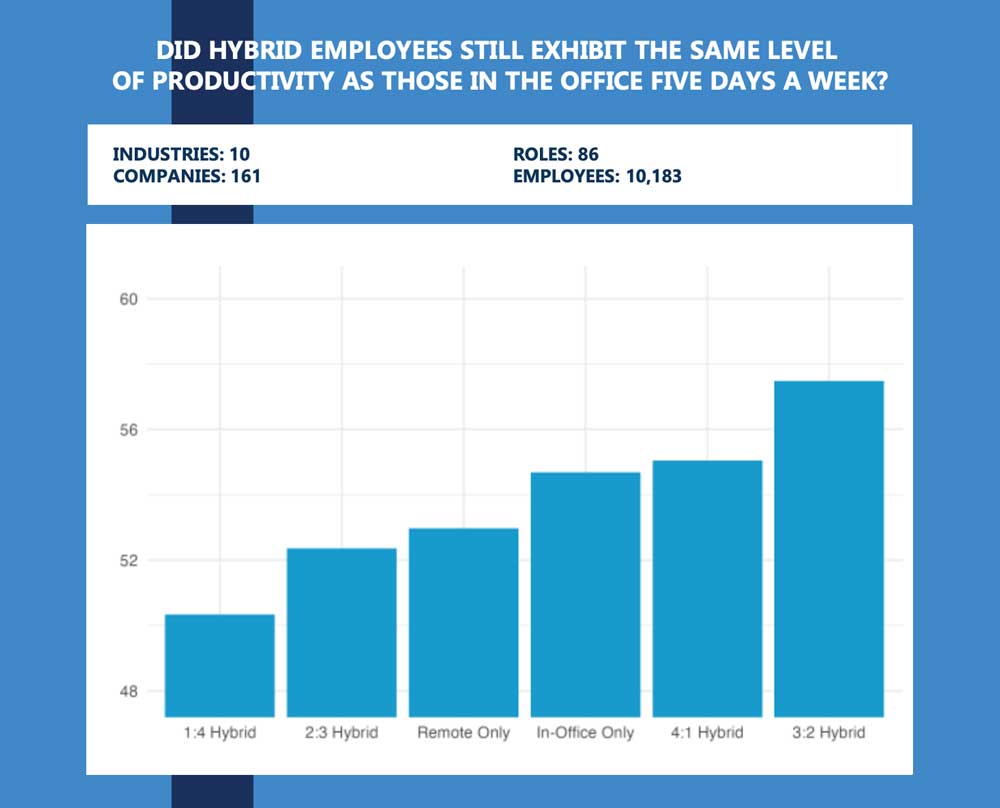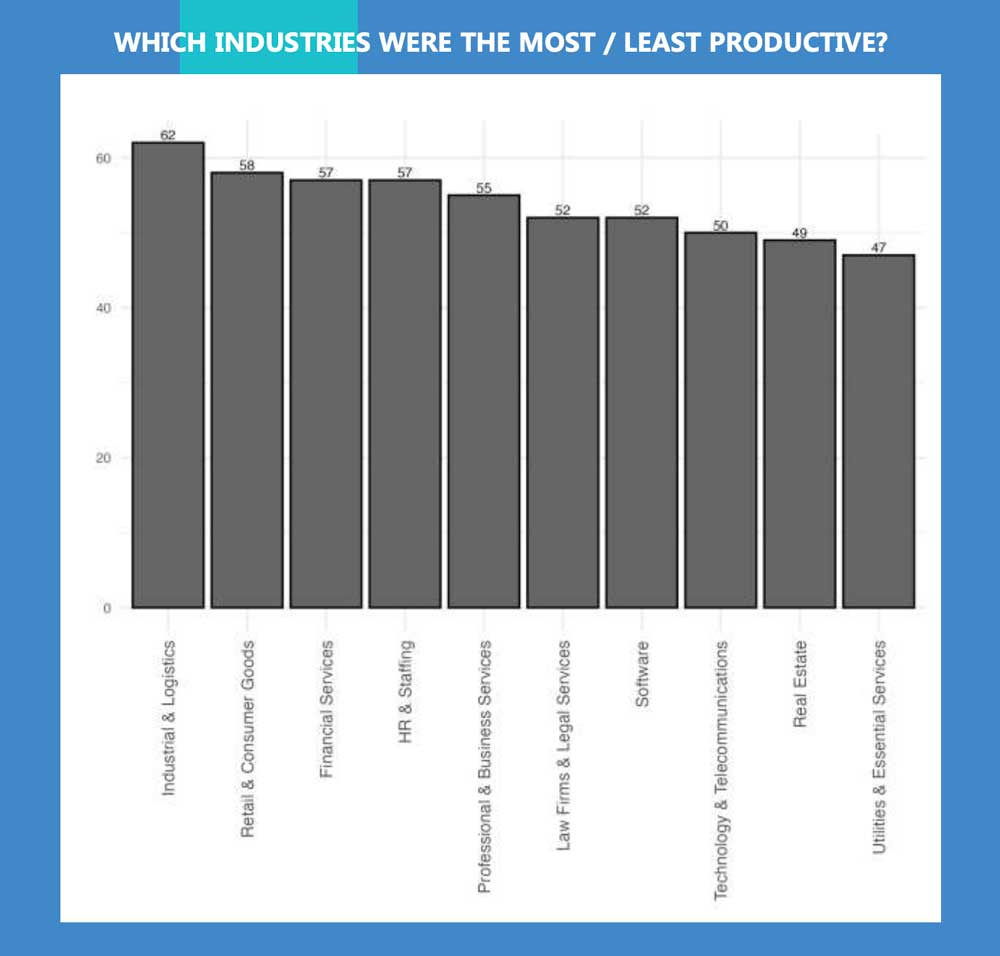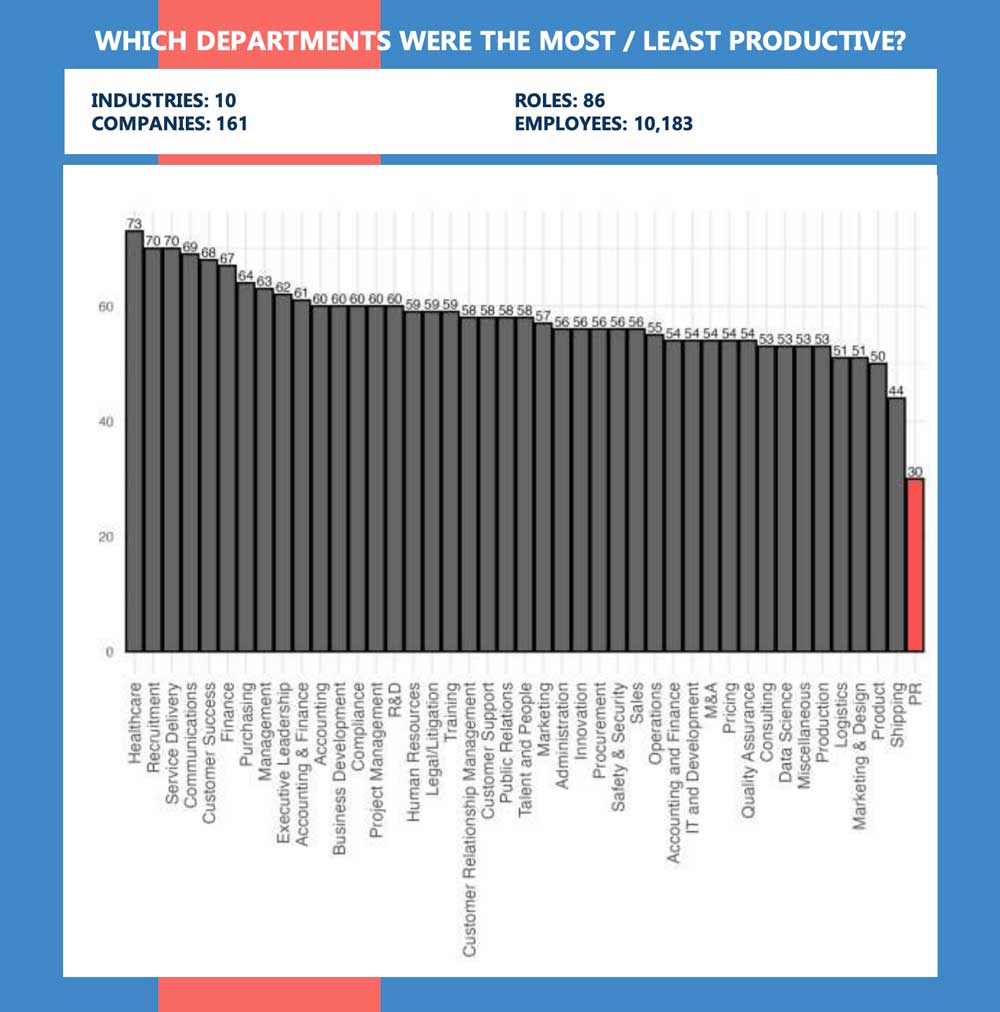New Prodoscore Data: Hybrid Work is the Most Productive, AI Adoption is Increasing
Prodoscore released its Q3 Productivity Pulse Report, based on anonymized data from over 10,000 employees across 161 companies. The standout items include the maturity of the hybrid work model and the increased use of AI across all industries and departments. The report also examined relative productivity between sectors and departments.
Hybrid Work Model Matures and Shows Consistent Increased Productivity

Prodoscore data has consistently shown that the hybrid work model is the most productive compared to fully in-office or remote work.
For the first time, we observed that employees required to spend two days working in the office and three days working remotely fell behind both remote-only and in-office-only employees in terms of productivity. The sharp increase in productivity for three days in-office and two days remote compared to all other models suggests that this schedule is the clear winner.
AI Adoption Continues to Rise
AI adoption increased across all sectors, with professional services exhibiting the highest utilization and the legal industry showing the lowest.
The report also revealed that, regardless of industry, people who regularly used AI tools were twice as productive as those who didn’t. This highlights the benefits of automating repetitive tasks and incorporating AI into everyday workflows.
There was also little difference in AI use between sectors, with an average of approximately 45 minutes of AI use per week for individual employees across all sectors. This doesn’t mean that every employee is using AI 45 minutes a week, but rather that those who have adopted it are bringing up the average for those who haven’t.
AI adoption by sector breaks down as follows:

The only real surprise here is the lower AI adoption in HR & Staffing, where several tasks can be automated or streamlined with AI. It may be that AI is so embedded in the tools workers use regularly, such as Applicant Tracking Systems (ATS), that people don’t feel the need to use additional AI tools.
Industrial & Logistics Sector First in Productivity
For the second consecutive quarter, the industrial and logistics sector experienced high productivity, driven by seismic changes in trade policy and robust consumer demand.
Retail and Consumer Goods saw a 9% quarter-over-quarter lift in productivity, while Utilities and Essential Services had the sharpest decline. In the Financial and Legal Services sectors, productivity remained steady. Retail spiked in July, possibly due to summer spending, while utilities decreased due to regulatory challenges and policy uncertainty.

Healthcare Leads in Departmental Productivity in Q3 2025
Healthcare led in productivity, while mergers and acquisitions showed the most considerable quarter-over-quarter increase. The M&A increase was likely driven by lower interest rates and strategic growth being back on the menu after a period of stagnation. Also notable is the very low productivity level in public relations, which may be attributed to a low demand for this service and the potential for this department to be absorbed by marketing.
Healthcare has consistently high productivity, which is likely driven by demand from an aging population with increasing medical needs.
Pricing departments experienced a sharp decline in productivity over the past quarter, with a notable 14.3% drop. This may be explained by the same cost volatilities and economic turmoil that contributed to the rise in productivity in the logistics sector.

Measuring productivity in your own business can reveal where gaps exist and highlight your own trends.
Click here to view the full Q3 2025 Prodoscore Productivity Pulse report. Contact us for a demonstration of how we can help monitor productivity gains in your business on a quarterly, monthly, weekly, and even daily basis.
